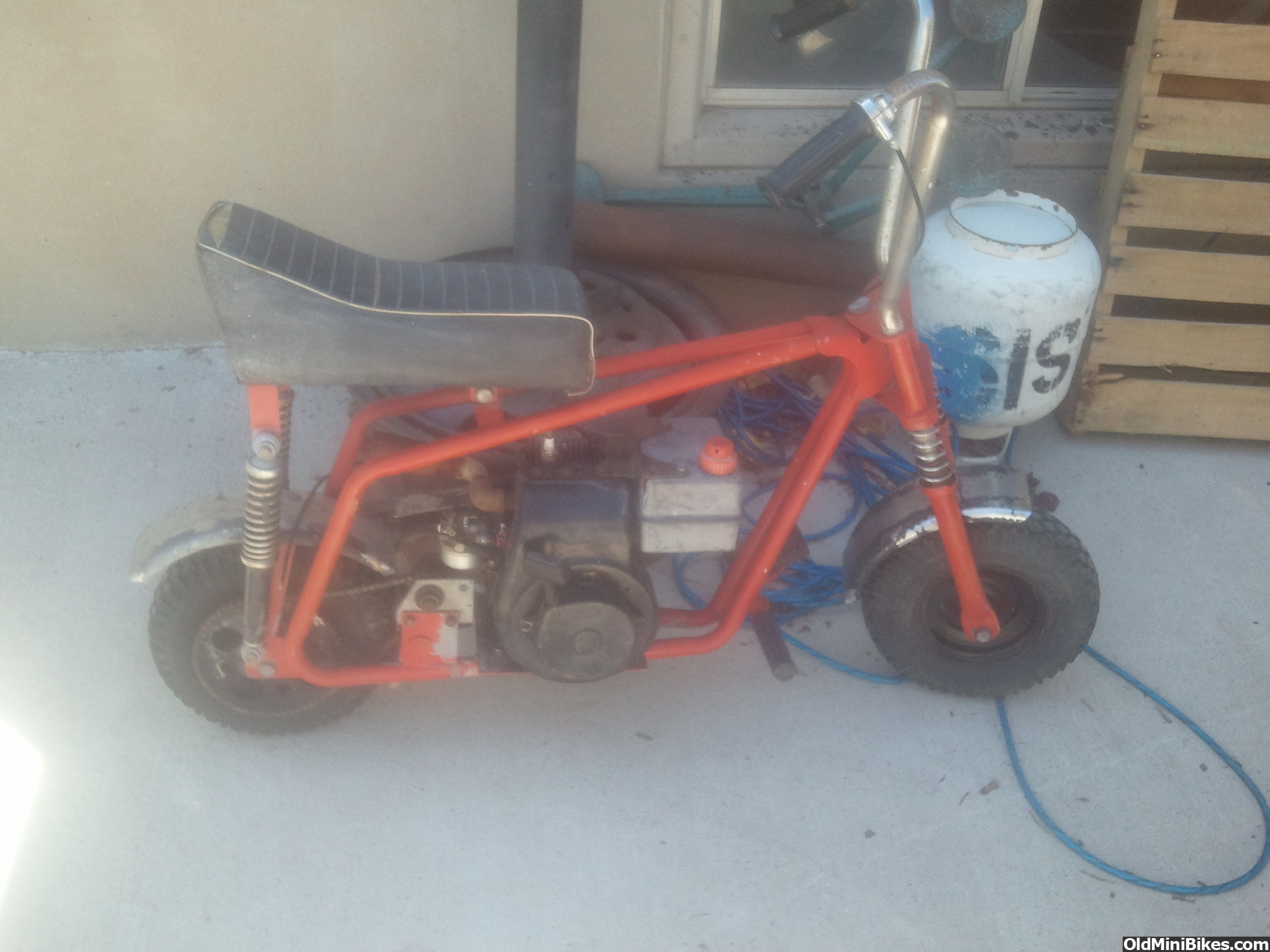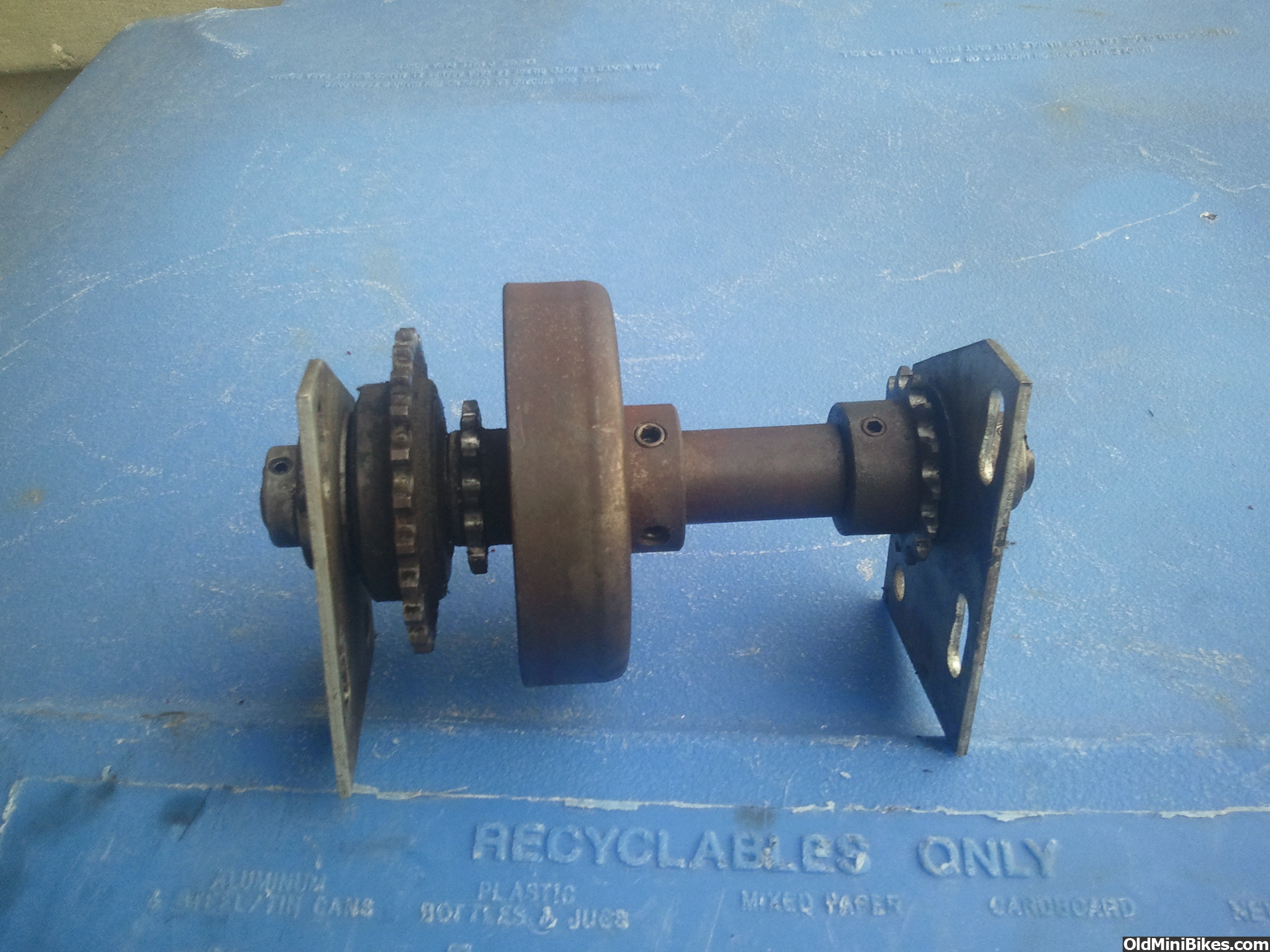Guys,
Here's what I think I know about this minibike...
It was built by Bird Engineering, and because it is a 1" frame diameter model, it was sold by Sears, 1970/1973?
What I do not know is the model? The color was red, and it has a very large brake boss, compared to most of the Birds.
I know the engine mount is missing. I'm sending the frame & forks off to the acid dippers to remove the paint & the rust. When I gets back I'll clean up all the tube issues, fabricate an engine mount, & weld it on.
Attached is a picture of the spring front forks
Does anyone know if or how the front forks come apart? I can't see any obvious way, except cutting some welds?
Thanks
BMHS


Here's what I think I know about this minibike...
It was built by Bird Engineering, and because it is a 1" frame diameter model, it was sold by Sears, 1970/1973?
What I do not know is the model? The color was red, and it has a very large brake boss, compared to most of the Birds.
I know the engine mount is missing. I'm sending the frame & forks off to the acid dippers to remove the paint & the rust. When I gets back I'll clean up all the tube issues, fabricate an engine mount, & weld it on.
Attached is a picture of the spring front forks
Does anyone know if or how the front forks come apart? I can't see any obvious way, except cutting some welds?
Thanks
BMHS




